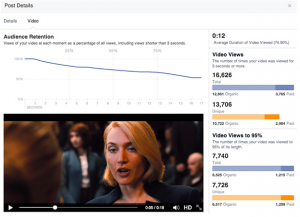Columnist Greg Gifford shows that when it comes to retaining local SEO clients, setting expectations and providing education is key.

If you’ve read any of my past articles, you know that I sometimes (usually) write them from up on my soap box… and this time, I’m right back up there. Nearly every SEO and online marketer I’ve talked to at conferences this year has mentioned the problems they’ve had with setting client expectations.
It seems like clients (or bosses) want bigger, more amazing results — and they want them faster than ever before. We all keep hearing “What kind of results will I get?” or “How long will it take?” or “How much more traffic will we get?” And since there’s no way to definitively answer those questions, potential clients sometimes balk (or for in-house people, bosses give you “that look”) when we tell them, “It depends.”
People assume that there’s a set task list, and if you complete those tasks, a site will magically jump to the top of search results in Google. Or even worse, they think SEO is the same as PPC and don’t understand why results aren’t instant.
The best way to end up with happy clients is to make sure they have a crystal-clear understanding of what you do for them. Don’t assume that everyone understands Local SEO like you do. Use simple examples to explain the complicated concepts and processes. I’ve shared a few tricks in this vein before — both the pizza delivery and simple math explanations are a huge help — but they don’t address the disconnect in client expectations.
Answering tough questions from bosses and clients
Lately, we’ve been answering these tough questions with an honest explanation: Local SEO doesn’t happen in a vacuum. Let me walk you through how we explain things:
We all know that there are hundreds of signals, both on a site and off a site, that influence the relevancy and importance of that site in Google’s algorithm. Unfortunately, to someone who doesn’t know much about SEO, that sounds like a cop-out. Instead, we show them the Local Search Ranking Factors study by Moz. The pie chart breaks down the different signal areas into eight main areas, based on potential weight in the local algorithm.
We then explain that these are the main areas that influence local relevancy. While each area includes a variety of signals, for the sake of explaining what we do, the eight areas will be sufficient.
We explain that there’s no silver bullet — there’s no single area that results in a guaranteed win. We explain that every business is different, and every local area is different. The things you’d need to do for a bankruptcy attorney are completely different from what you’d do for a car dealer in the same city. And even if we’re talking about the same type of business, the markets are completely different from one city to the next.
Doing the local SEO math
This is when we pull out the Local SEO math equation, so we can clearly demonstrate how many competitors a business has in their immediate area. For example, if we’re talking to a Toyota dealer in Denver, we point out that for used car and auto service queries, they have hundreds of local competitors.
We explain that nothing happens in a vacuum — you’re fighting against the other hundreds of dealers trying to show up for the same terms. You can’t optimize a few pages and get a few links and suddenly be the number one result. If you’re trying to make a site more visible, you’ve got to continue to push out the right relevancy signals over time so that Google will rank the site higher.
We also explain that we’re not the only ones doing SEO; their competitors are also fighting for more visibility. Whenever one person climbs up in rankings, other sites have to go down. If we push your site higher, the sites you push down are that much more motivated to force you back down again.
It’s basically a never-ending “king of the hill” battle — and that’s why SEO never ends. That’s also how you keep clients going. Sometimes, they’ll think that once they rank high, they don’t need your services any more. It really helps to explain that everyone with less visibility is always trying to claw their way to the top, so the need for good SEO never dies.
So the next time a potential client asks you how long SEO takes or what results they’ll get, use the “Local SEO doesn’t happen in a vacuum” example to set the right expectations. You’ll close more deals and keep clients longer if they have a better understanding of what you’re doing for them.
Some opinions expressed in this article may be those of a guest author and not necessarily Search Engine Land. Staff authors are listed here.
Marketing Land – Internet Marketing News, Strategies & Tips
(65)










